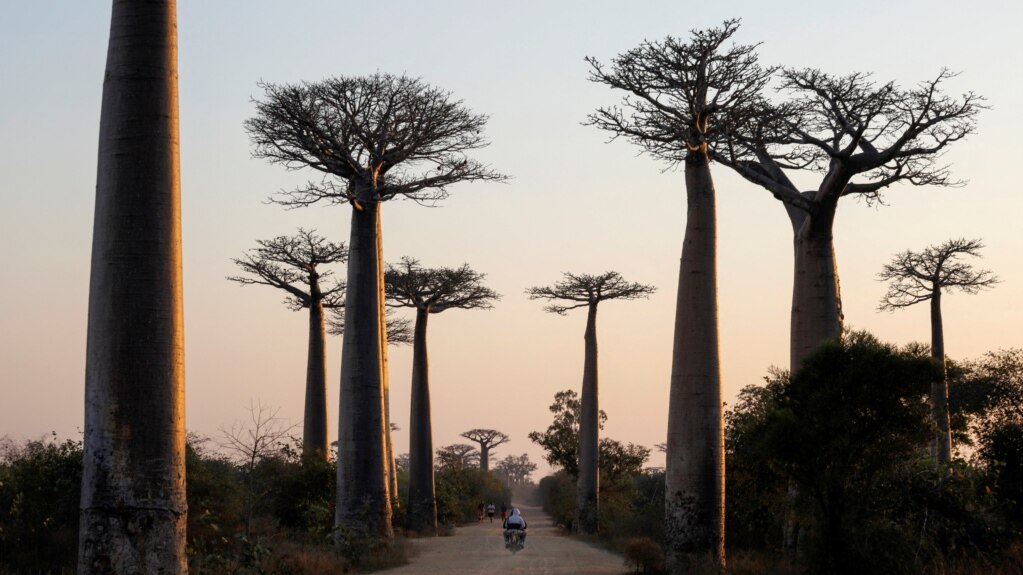The baobab tree is a special thing to see. During the dry season, its leafless branches look like roots coming from a thick trunk. It appears as if someone took a tree from the ground, flipped it on its head and put it back into the earth.
That is why the tree is sometimes called the "upside down tree."
Baobab trees grow in Madagascar, mainland Africa and Australia. The origins and history of the baobab have been something of a mystery. But a new study that looked at all eight recognized species helps tell the baobab's story.
The baobab originated in Madagascar about 21 million years ago. It reached the African continent and Australia sometime in the past 12 million years, researchers found. Madagascar, an island off Africa's southeastern coast, has a large ecosystem. It is home to many kinds of plants.
Two baobab lineages went extinct in Madagascar. But the lineages established themselves elsewhere, one in mainland Africa and one in Australia, the study showed.
It appears that baobab seed pods floated from Madagascar to mainland Africa, located about 400 kilometers to the west. The seeds also traveled to Australia, nearly 7,000 kilometers to the east.
"The plants almost certainly got to Africa and Australia floating on or with vegetation rafts," said plant expert Tao Wan of the Wuhan Botanical Garden in China. He is one of the writers of the study, which appeared recently in the publication Nature.
Wan added that the seeds were able to travel to Australia because of the Indian Ocean gyre, an oceanic current.
Baobab trees provide food, shelter and nesting places for wildlife, including bees, birds and various mammals. Their fruits also provide important nutrients and medicines for people. Baobab leaves can be eaten, too.
The trees produce large, sweet-smelling flowers. Their sugary nectar appeals to nighttime pollinators like fruit bats and hawk moths. Their flowers also attract two kinds of primates -- lemurs in Madagascar and bush babies in Africa.
Ilia Leitch is a plant geneticist at the Royal Botanic Gardens Kew in London. He is also a study co-writer. He said baobabs can grow to be very large and live for thousands of years.
Their very large root systems “play an important ecological role, helping to slow down soil erosion and enabling nutrient recycling,” he said.
Baobabs are a water source for local people during the dry season. But Africa's baobabs are at risk from elephant damage. The animals sometimes cut the tree trunks with their tusks to get water.
I’m Dan Novak.

